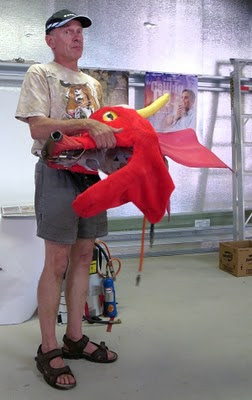
Sony kindly sent me a loan
PRS-350 for review this week.
The PRS-350 is a small e-ink book reader, less than the size of a novel (5"), but with a "paper white" touch screen. The display is 800 x 600 pixels and capable of reasonable grey scale display and of course works nicely in daylight. It has 2GB of built in storage.
The review unit I received was pretty grotty from previous users but cleaned up well with a damp cloth. I guess that's the drawback of any touch screen - including the iPad.
Around the rim, the device has slide power switch to wake it up, a stylus top right, one of the various micro-USB connectors (the same as the HTC phone I use which is handy but not the standard one used on many devices, and a reset hole.
On the front there are buttons for previous and next page, home, text size and options. I'd be inclined to make the next and previous page more prominent as they'll be used hundreds of times more than the others.
When you first plug it in to your computer, two storage devices are mounted, one with applications that download the software installer (a good idea - rather than directly installing an old version of the software),

another with a mysterious directory with "database", "Digital Editions" and some pdfs with the user manual and instructions on how to get content.

Unfortunately you don't seem to be able to simply drag content to the reader so software needs to be installed.

The installer wants to reboot the machine, I'm on a Mac here, and that always worries me as it indicates it's going to install something that runs in the background. Sure enough, after reboot, even when not plugged in there is a program running called "Reader Library Launcher". There is no uninstaller.
The "Reader Library" software shows your library on the computer, a status display of any transfers, your local disk and an ebook store:

Clicking one of those links simply opens your web browser at their store, so it's not an immersive experience like Kindle or iTunes. The instructions on the Borders store for "Reader Users" are a bit scary:

I mostly purchase books from O'Reilly in ePub format and for some reason you can't just drag them in to the application, you need to "Import" them.
For me, ePub has emerged as the winning book format, with its ability to reflow the text around graphics and the open nature of the file format (a zipped xml file) it's what I look for in a book reader.
The Sony PRS-350 does a good job with my test epub file, dithering the colour images down and showing the text styles nicely. The touch screen means that links work the way you expect without having to move through a page link by link.
It's great having search but the keyboard is a little cramped and the slow updating of the e-ink display makes this kind of user interaction a little clunky.
SummaryThe device is good, it handles even large ePub books well and does a good job with fonts and images. The software is not so good, the integration with stores is poor and even books you own can't be just dragged to the window or the device.
The touch screen, even on a matt display works well and I can see why an iPad owner would want one for times when they want to read in daylight.
RRP is AU$229 which seems fair but not quite in "impulse purchase" range.











 Sony kindly sent me a loan
Sony kindly sent me a loan 















